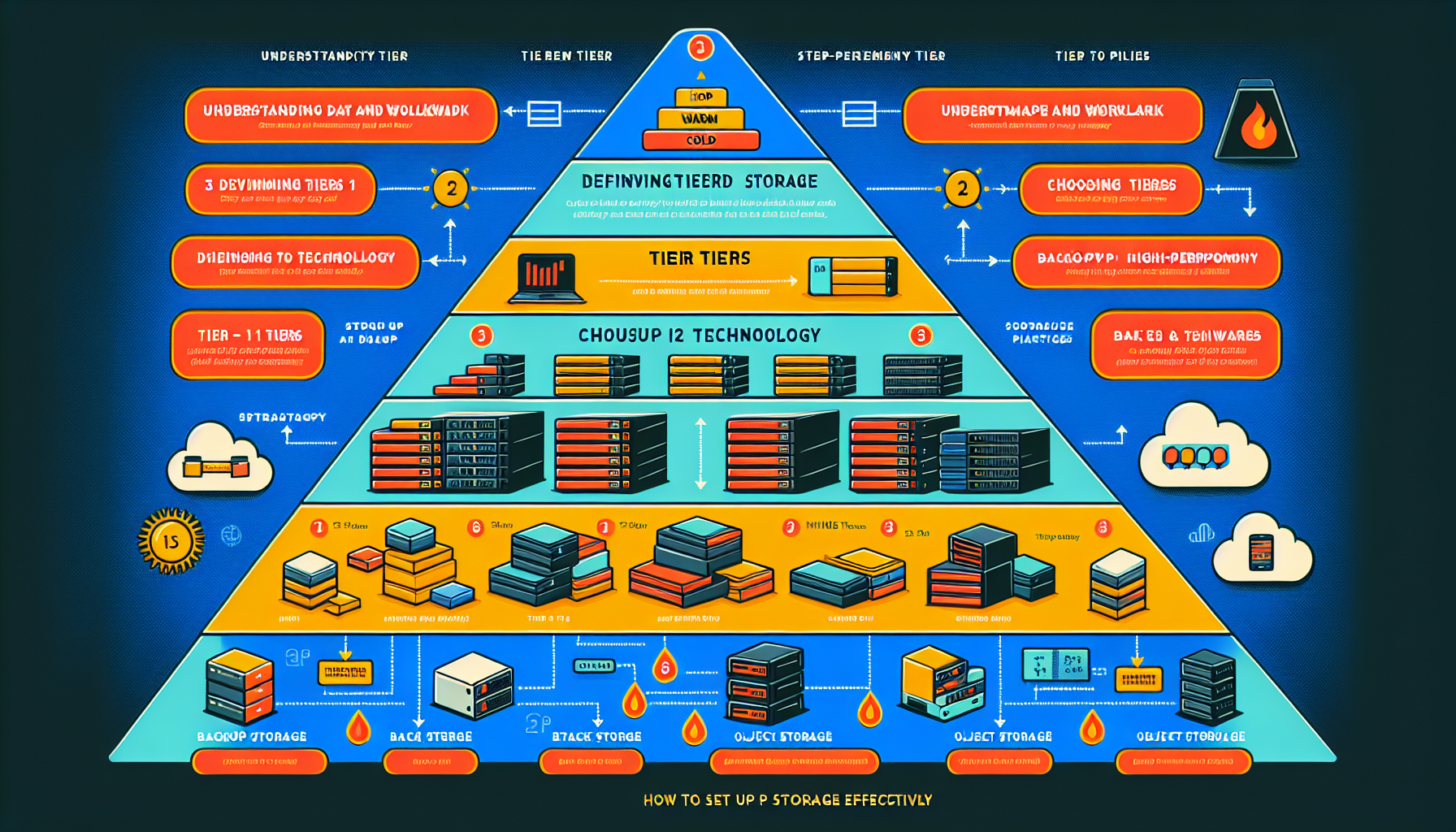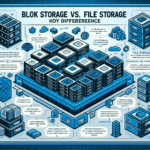Setting up tiered storage effectively requires careful planning, the right combination of hardware and software, and a clear understanding of your workload and business requirements. Tiered storage allows you to organize data across different types of storage media, balancing performance, capacity, and cost. Here’s a step-by-step guide to setting up a tiered storage solution:
1. Understand Your Data and Workload
- Analyze Data Access Patterns: Identify which data is frequently accessed (hot data), occasionally accessed (warm data), and rarely accessed (cold data). Use monitoring tools to analyze read/write frequency, latency needs, and storage usage trends.
- Classify Data: Group data into categories based on performance, latency, and retention requirements (e.g., production data, archival data, backups, etc.).
2. Define Your Tiers
- Tier 1 (High-Performance Storage): Use fast but expensive storage media (e.g., NVMe SSDs or enterprise-grade SSDs) for hot data that requires low latency and high IOPS (e.g., databases, VMs, AI/ML workloads).
- Tier 2 (General-Purpose Storage): Use mid-range storage media (e.g., SATA SSDs or high-speed HDDs) for warm data that is accessed occasionally (e.g., shared file systems, test environments).
- Tier 3 (Cold Storage): Use cost-effective, high-capacity storage (e.g., traditional HDDs, object storage, or tape) for archival and backup data that is rarely accessed.
- Optional Tier 4 (Cloud Storage): Integrate public or private cloud storage for additional scalability or disaster recovery (e.g., AWS S3, Azure Blob, Google Cloud Storage).
3. Choose the Right Storage Technology
- Hardware-Based Tiering:
- Invest in storage arrays or appliances that support automated tiering (e.g., Dell EMC Unity, HPE Nimble Storage, NetApp AFF/FAS).
- Use RAID configurations tailored to each tier’s requirements (e.g., RAID 10 for performance, RAID 6 for capacity).
- Software-Defined Storage (SDS):
- Deploy SDS platforms that support tiering (e.g., VMware vSAN, Nutanix, Ceph, Red Hat OpenShift Data Foundation).
- Cloud Integration:
- Use hybrid cloud solutions to extend on-premises storage into the cloud for deeper tiers.
- Consider “cold storage” services like AWS Glacier or Azure Cool Blob for long-term retention.
4. Implement Automation and Policies
- Automated Tiering: Use storage systems or management software that supports automated data movement between tiers based on policies (e.g., frequency of access, file age, or size).
- Example: Data that hasn’t been accessed in 30 days moves from SSD to HDD automatically.
- Manual Tiering: For specific workloads, you may need to manually assign data to the appropriate tier (e.g., separating production and backup environments).
- Data Lifecycle Management (DLM): Define retention periods for different data types and ensure compliance with data governance policies.
5. Integrate Backup and Disaster Recovery
- Ensure that backups and disaster recovery (DR) solutions are integrated with tiered storage.
- Use deduplication and compression to optimize storage in cold tiers.
- Regularly test recovery processes to ensure data integrity.
6. Leverage Virtualization and Containers
- If your environment is virtualized (e.g., VMware, Hyper-V, or KVM), ensure storage tiers are optimized for VMs and virtual disks.
- In Kubernetes environments, use tools like Kubernetes Storage Classes, CSI drivers, or dynamic provisioning to assign storage tiers for container workloads.
7. Optimize for AI/ML Workloads (Optional)
- For AI/ML workloads, use high-performance NVMe tiers for training datasets and SSD tiers for inference workloads.
- Integrate GPUs with storage tiers designed for high throughput to handle large datasets efficiently.
8. Monitor and Fine-Tune
- Use monitoring tools (e.g., Prometheus, Grafana, or vendor-specific tools) to track performance and storage utilization across all tiers.
- Regularly fine-tune policies based on evolving workload requirements.
- Perform capacity planning to avoid bottlenecks or running out of space in critical tiers.
9. Consider Security and Compliance
- Encrypt data at rest and in transit across all tiers.
- Apply role-based access control (RBAC) to protect sensitive data.
- Ensure compliance with industry standards (e.g., GDPR, HIPAA, ISO 27001).
10. Test and Document the Setup
- Perform benchmarking tests to validate performance across tiers.
- Document the tiered storage architecture, policies, and workflows for future reference and troubleshooting.
Example Scenario
- Tier 1: NVMe SSDs for databases and high-performance VMs.
- Tier 2: SATA SSDs for shared file systems and application data.
- Tier 3: HDDs or object storage for archival, backups, and infrequently accessed data.
- Cloud Tier: AWS Glacier for long-term cold storage.
By following these steps, you can build a cost-effective, high-performance tiered storage solution that aligns with your business needs.




